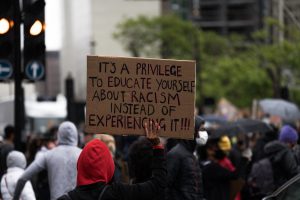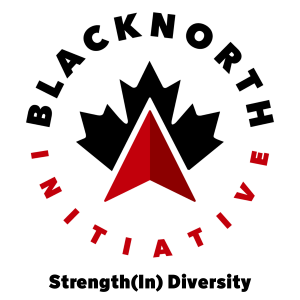 Is your company doing the important work that supports diversity, equity and inclusion (DE&I)? Or is it settling for “performative diversity”?
Is your company doing the important work that supports diversity, equity and inclusion (DE&I)? Or is it settling for “performative diversity”?
The subject came up after I shared an article on social media that listed some “easy ways” communicators could support the progress of diversity initiatives:
- Push for more realistic, representative photography, including in age, colour, body types and geographical differences.
- Tell more diverse stories and not just for specific times (like Black History Month) but all year.
- Actively share news, updates and perspectives from employee resource groups (ERGs).
I quickly heard back from my friend Priya Bates (for my comms friends: ABC, MC, SCMP, IABC Fellow), President of Inner Strength Communications, who was not impressed:
“This is simply the basics to show performative diversity – yes diverse photos, stories and highlighting ERG initiatives…but if your organization is not representative of its community, customers and colleagues, there is more important work to do.”
I set up an interview with Priya, who has years of experience in strategic internal communication. She also co-founded A Leader Like Me in 2020 to help underrepresented women and non-binary people of colour progress in their careers. She shared these thoughts in response to my questions:

How should internal comms teams give inclusion more visibility? Are there any “quick” ways?
White leaders and mostly white HR and comms practitioners are looking for QUICK. Let’s acknowledge that quick is performative. The real work is hard work.
How do you move beyond “performative diversity”?
Here’s how I see the evolution from Performative to Performance:
- Black boxes, hashtags, rainbows, statements of support, orange shirts – these all show support but in a safe way, and the real work isn’t being done.
- Donate to causes. It makes us feel good but again, more work is needed.
- Listen to other experiences and perspectives.
- Read the books. Ask questions. Offer training in systemic bias and racism.
- Provide space and time – Employee Resource Groups (ERGs), programs and training.
- Provide funds to make a difference. Many ERGs are asked to do the heavy lifting but on their own time with no budget.
- Acknowledge there is an issue that needs to be fixed (even though it may mean losing some of our own privileges).
- Use research to look at norms and differences in gender, race, sexual orientation, disability, etc.
- Create an action plan that fixes the root causes and doesn’t slap a Band-Aid on policies.
- Set goals for change and hold ourselves accountable to results.
Absolutely start with the stories, images and videos you create. Ask yourself if you’re inclusive and representative. Do you talk exclusively about leaders (who are mostly white and male) or do you ensure stories get told across levels, roles, departments, regions, workplaces? Do you share customer, community and employee perspectives, not just from head office but also from customer-facing people? You will see more diversity the further you get from the centre.
Be careful of trying to look inclusive if you are not. If you choose stock photos to look diverse, people won’t trust you because they know who you’re pretending to be is not consistent with who you are.
What if an organization isn’t representative?
- Look at the community in which you do business. Does your organization, department and team reflect similar diversity? In Canada, that’s 30% visible race diversity, 15% disability.
- Does diversity change as you get higher in your organization? The stats at the bottom of an organization should rise to the top at the same numbers, but they don’t. Ask yourself, “Why is that?”
- Look at your hiring, firing, retention, promotion and talent management strategies to figure out where the process is broken.
Are you seeing more honest attempts to start this work?
 Yes. Look at the Black North Initiative, which had 500 Canadian CEOs sign a pledge that commits them to “the removal of anti-Black systemic barriers negatively affecting the lives of Black Canadians.”
Yes. Look at the Black North Initiative, which had 500 Canadian CEOs sign a pledge that commits them to “the removal of anti-Black systemic barriers negatively affecting the lives of Black Canadians.”
Can you give some examples?
One of the Black North Initiative members is Sobeys. They have an inspiring long-term action plan that looks at diversity as a whole at the organization.
Another example, I’m working on an employee engagement plan with a government department that started with operational changes and is trying to help employees understand their role in driving change. There is high commitment from the senior leaders.
What role do employees have in driving change?
The opportunity is to ensure everyone understands why diversity is important in helping drive reputation, retention, recruitment, recognition and results. Ask people to notice their thoughts and feelings. What are the biases, things you think or have been told? Ask yourself what you can do differently to make sure people feel included. Listen and learn. Call out others for racist language or actions. Encourage and allow others to contribute.
Communication professionals in particular need to be willing to call out the discrepancies and inconsistencies in our advice to leaders and organizations. It’s okay to say we’re not there yet, but acknowledge change is needed and we have a plan to get there or get better.
What can comms professionals do if a company is dragging its heels?
Some CEOs have said, ‘This is a trend, it will go away.’ I don’t believe that. It’s building. Groups are coming together and amplifying other voices, like Black Lives Matter and Stop Asian Hate.
The data consistently tells us that more diversity correlates to innovation and results. We need diverse perspectives from employees, suppliers and customers to make the right decisions. Help your leaders understand that.
Help them understand that the next generation is looking for companies with purpose, with a good reputation for doing the right thing. [For example, see Gen Z demands more diversity and inclusion from brands.] People notice if performative gestures and statements aren’t backed by action.
Basically, leaders can choose if they will move forward or be left behind.
My thanks to Priya for taking time out to talk with me. What would YOU add to the conversation? What effective ways are you finding to support DE&I efforts? Please share in the comments.
“It’s a privilege” photo by James Eades on Unsplash.

One of my subscribers commented, “Women often decry the man-els (panelists who are only men) at conferences. One recommendation I have is to increase visibility of [diverse] employees…arrange for diverse employees to speak at conferences.”
Note that A Leader Like Me has an “under-represented speaker list,” telling conference and webinar organizers “The talent is there but you have to put in extra effort to look outside your immediate network of contacts.” https://aleaderlikeme.com/underrepresentatedspeakerlist/